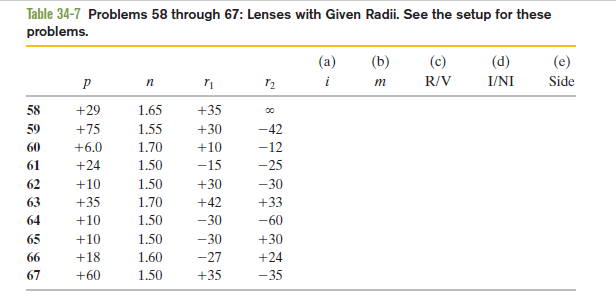58 through 67 61 59 Lenses with given radii. An object stands in front of a thin lens, on the central axis. For this situation, each problem in Table 34-7 gives object distance , index of refraction n of the lens, radius localid="1662989860522" of the nearer lens surface, and radius localid="1662988669866" of the farther lens surface. (All distances are in centimeters.) Find (a) the image distance and (b) the lateral magnification m of the object, including signs. Also, determine whether the image is (c) real localid="1662988718474" or virtual localid="1662988727007" , (d) inverted localid="1662988740117" from object or non-inverted localid="1662989876683" , and (e) on the same side of the lens as objector on the opposite side.







